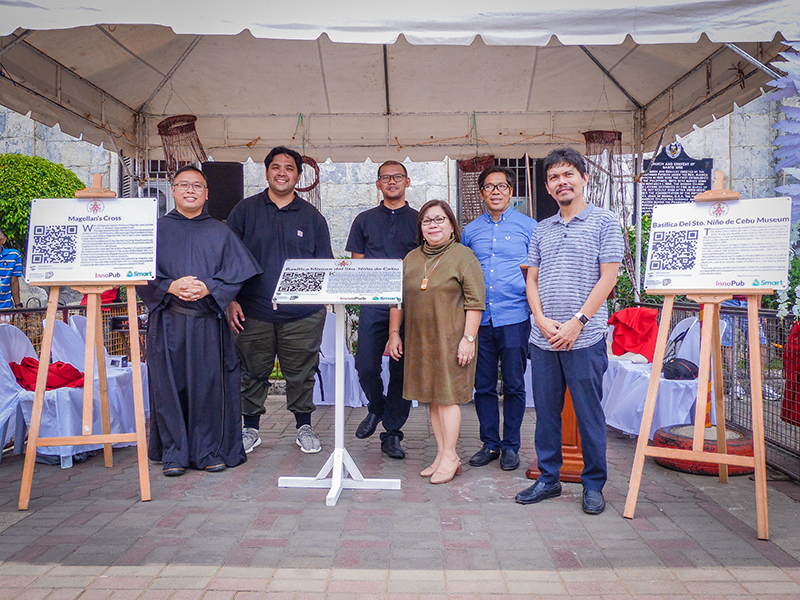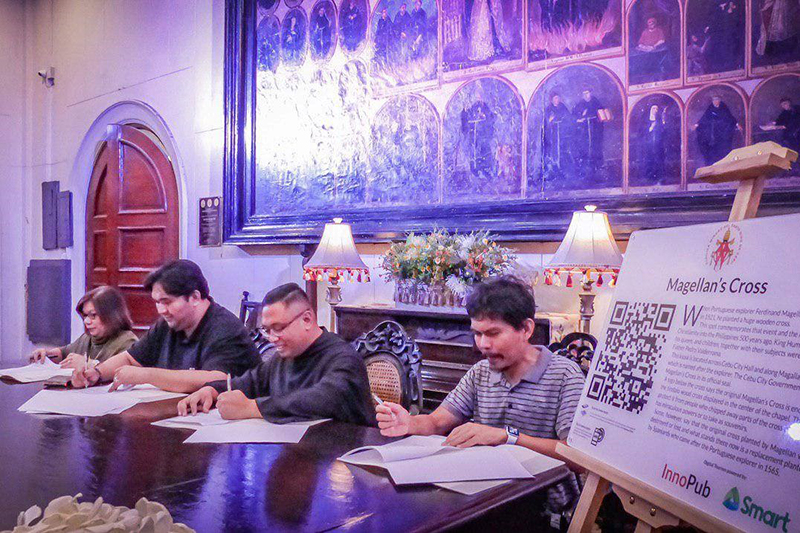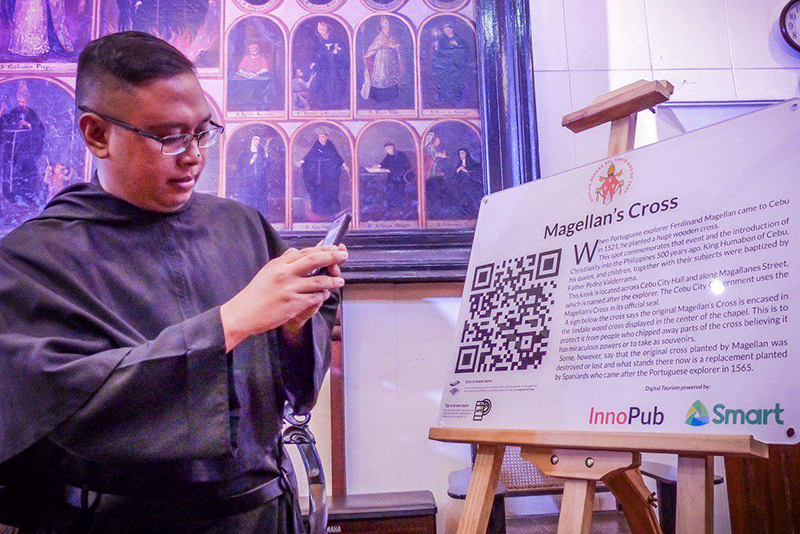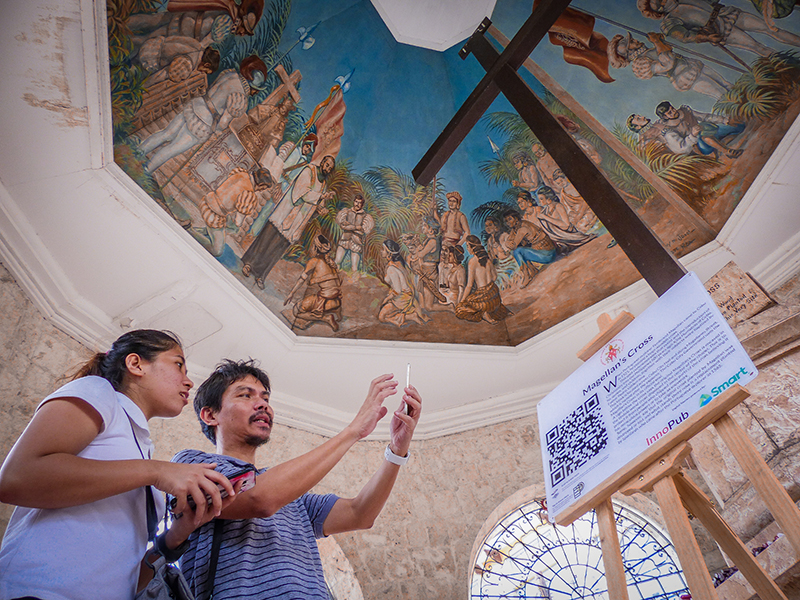Pilgrims and tourists may find a curious object installed on the façade of the Basilica Minore del Sto. Niño and Magellan’s Cross in Cebu City. To know more about this contraption, all they have to do is open their mobile phone’s camera and focus on the marker, to trigger the download of information directly onto their mobile devices.

The Basilica Minore del Sto. Niño recently partnered with PLDT wireless unit Smart Communications and InnoPub Media to install these interactive markers at the church and its museum, and at the famous landmark across from it. The markers contain QR codes and NFC chips that mobile users can scan using their phones to access important details on the heritage of the sites.
The initiative is part of a Smart-backed digital tourism and catechism program and is in line with the upcoming celebration of 500 years of Christianity in the Philippines in 2021. The program harnesses technology to deliver cultural, historical, and travel information through the creation of apps, mobile guides, and interactive materials, that give travelers comprehensive and localized information about various destinations in the country.

“With these digital markers, the faithful will have a better understanding and appreciation of our heritage churches. We thank Smart and InnoPub for their contribution to the upcoming 2021 celebrations,” said Rev. Fr. Ric Anthony Reyes OSA, Basilica Minore del Sto. Niño spokesperson.
The digital tourism program features key religious and heritage sites, notable churches, and travel destinations such as nature parks and historic cities. “Considered the birthplace of Christianity in the country, Cebu and the Basilica will play a very important role in the celebration, as this will be the fifth centenary of the arrival of the image of Sto. Niño in the province,” said Smart Visayas-Mindanao public affairs head Maria Jane Paredes.
As part of the program leading to the 2021 celebrations, Smart also recently unveiled interactive tourism markers at Saints Peter and Paul Parish Church in Bantayan, Cebu. The digital tourism program has also been implemented at the Cebu Metropolitan Cathedral and in heritage churches in Argao, Boljoon, Carcar, Dalaguete, Samboan, Santander, and Sibonga, among other municipalities in the province.

Smart aims to contribute to heritage conservation efforts by disseminating information and promoting awareness of the historic, cultural, and symbolic significance of distinguished churches all over the Philippines.
The digital tourism program is a collaboration by local government units, tourism offices, dioceses, and parishes with the National Commission for Culture and the Arts, Department of Tourism, Smart, and InnoPub Media. Launched in 2012, it has been implemented in Antique, Baguio City, Bicol Region, Cebu, Davao, and Metro Manila, among other areas.
Present during the signing of the memorandum of agreement are Smart public affairs’ Vis-Min head Maria Jane Paredes and deputy head Carlo Ople; Basilica Minore del Sto. Niño spokesperson Rev. Fr. Ric Anthony Reyes OSA; and InnoPub cofounder Max Limpag.
Liked this post? Follow SwirlingOverCoffee on Facebook, YouTube, and Instagram. //

